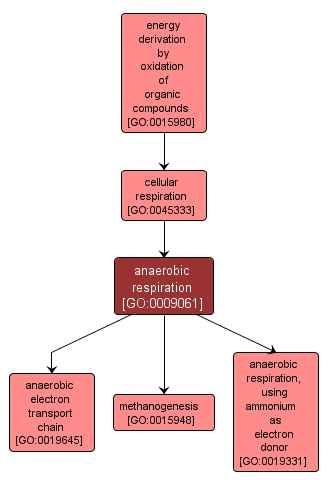GO TERM SUMMARY
|
| Name: |
anaerobic respiration |
| Acc: |
GO:0009061 |
| Aspect: |
Biological Process |
| Desc: |
The enzymatic release of energy from organic compounds (especially carbohydrates and fats) which uses compounds other than oxygen (e.g. nitrate, sulfate) as the terminal electron acceptor. |
|

|
INTERACTIVE GO GRAPH
|














